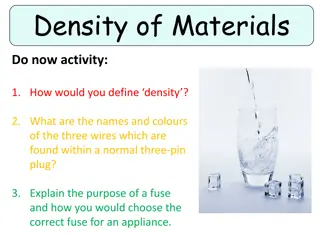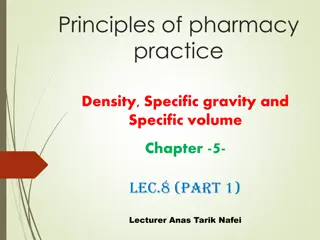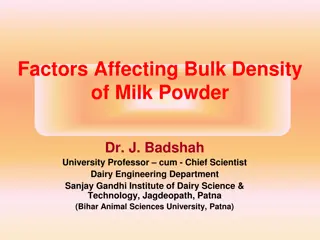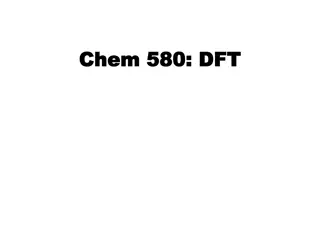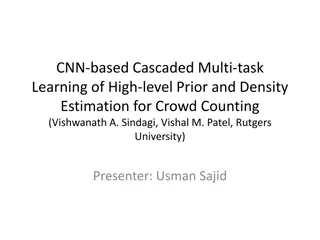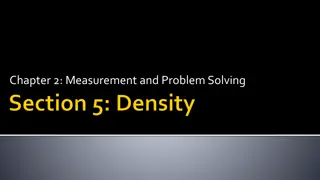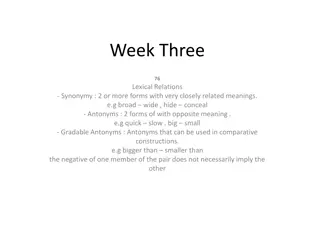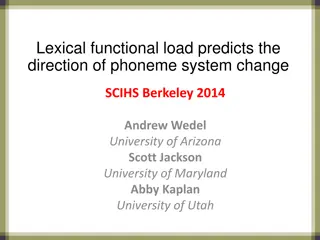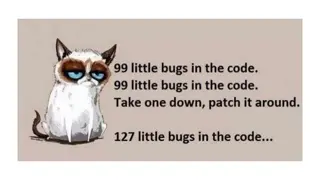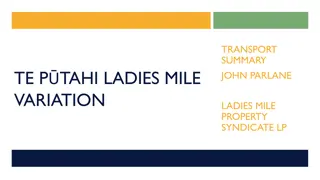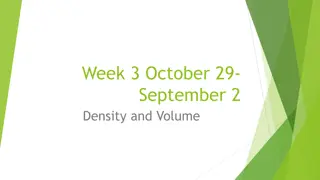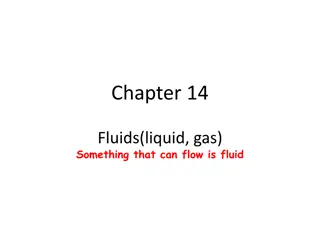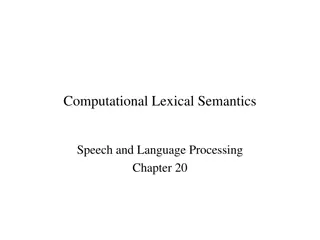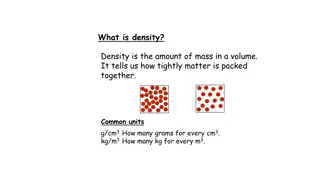Understanding Lexical Density in Text Analysis
Explore the concept of lexical density by analyzing the proportion of content words in a text. Learn how lexical density impacts clarity and interpretation using examples with varying levels of lexical density. Gain insights into the significance of lexical words and how they contribute to the meaning of a sentence.
Download Presentation

Please find below an Image/Link to download the presentation.
The content on the website is provided AS IS for your information and personal use only. It may not be sold, licensed, or shared on other websites without obtaining consent from the author. Download presentation by click this link. If you encounter any issues during the download, it is possible that the publisher has removed the file from their server.
E N D
Presentation Transcript
A text contains x lexical items. Thees items include content lexical items and grammatical lexical items (articles, prepositions, conjunctions, auxiliary verbs, pronouns). Lexical density is calculated as the percentage of content words in the whole text. If there are 100 words in a text and 60 are content words, then the lexical density is 60%. If there are 124 words in a text and 44 are content words the lexical density is approx. 27%.
The quick brown fox jumped swiftly over the lazy dog. The quick brown fox jumped swiftly over the lazy dog. The lexical words (nouns, adjectives, verbs, and adverbs) are colored red. There are precisely 7 lexical words out of 10 total words. The lexical density of the above passage is therefore 70%.
She told him that she loved him. Again, coloring the lexical words in red we have the following: She told him that she loved him. The lexical density of the above sentence is 2 lexical words out of 7 total words, for a lexical density of 28.57%.
The meaning of the sentence in Example 1 is quite clear. It is not difficult to imagine what happened when "the quick brown fox jumped swiftly over the lazy dog." On the other hand, it is not so easy to imagine what sentence in Example 2 means. The reader is sure to agree that, due to the use of vague personal pronouns (she and him), the second sentence has multiple interpretations and is, therefore, quite vague.
The reason that the sentence in Example 1 has a high lexical density is that it explicitly names both the subject (fox) and the object (dog), gives us more information about each one (the fox being quick and brown, and the dog being lazy), and tells us how the subject performed the action of jumping (swiftly). The sentence is packed with information and its high lexical density is a reflection of that. The reason that the sentence in Example 2 has such low lexical density is that it doesn't do any of the things that the first sentence does: we don't know who the subject (she) and the object (him) really are; we don't know how she told him (loudly? softly? lazily?) or how she loves him (intensely? passionately?); we don't even know if the first "she" and "him" mean the same people as the second "she" and "him." This sentence tells us almost nothing, and its low lexical density is an indicator of that.
Lexical Words in Red Lexical Density 50% he loves going to the cinema . 66.67% john loves going to the cinema . 71.43% john smith loves going to the cinema . 75% john smith loves going to the cinema everyday . 77.78% john smith intensely loves going to the cinema everyday . john smith intensely loves going to the huge cinema everyday . 80%
Written text Every previous visit has left me with a sense of the risk to others in further attempts at action on my part. There are 10 content words in a text of 22 items. The lexical density is 45%c. Lexical density is an indication as to how informative a text is.
Spoken text Whenever I d visited there before I d ended up feeling that other people might get hurt if I tried to do anything more. There are 7 content words in a text of 24 items. The lexical density is 30% c.
Grammatical intricacy is calculated by dividing the number of clauses in a text by the number of sentences. So if there are 12 clauses and 3 sentences in a text, the grammatical intricacy is 4. If there are only 4 clauses and 3 sentences the grammatical intricacy is 1.3.
Written text Every previous visit has left me with a sense of the risk to others in further attempts at action on my part. There is one clause and one sentence. The grammatical intricacy is 1.
Whenever Id visited there before Id ended up feeling that other people might get hurt if I tried to do anything more. There are four clauses and one sentence. The grammatical intricacy is 4.
Whenever Id visited there before I d ended up feeling that other people might get hurt if I tried to do anything more.
The spoken text has a lower degree of lexical density, but a higher degree of grammatical intricacy.
Why do texts happen? Speech Acts Locutionary act (what people try to do in a social context) Illocutionary act Perlocutionary effect
Quality tell the truth Quantity not too much, not too little Relevance - be relevant Manner be brief, unambiguous, polite
In spite of the Gricean maxims, people do not mean what they say and do not say what they mean. Have you got a pen? It s cold in here.
Wheres Bill? There s a yellow VW outside. A: I have two children. B: Well, that s alright. A: I also have a dog. B: Oh, I m sorry.
Pragmatic eg service encounter bank post office shop Casual interpersonal social role affective familiarity affiliation in group
GIVING & DEMANDING Information Goods & Services acknowledge/contradict statement/question offer/command undertake/refuse moodless clauses
There are many recognisable speech acts: performing deciding apologising threatening declaring love etc.
ACT smallest interactive unit Hey! Right OK Yes
MOVES initiating sustaining checking challenging etc.
TURNS one or more moves TURN TAKING current speaker selects next speaker current speaker selects self next speaker selects self and so on .
EXCHANGE minimal active unit of two turns ADJACENCY PAIRS question/answer How are you? Fine 3-PART EXCHANGE How are you? Terrible That makes two of us!
As we carry on conversations, we decide what to say based on what the previous speaker has said as well as what we expect the subsequent speaker to say. We alter what we say based on feedback. Listeners can indicate agreement, objection, etc. That is conversations a co- constructed.
Conversation is transient. Once said, it is gone. You can never remember exactly what was said (cf. Chinese whispers) Converation is spontaneous (cf. film language). Planned versus unplanned language.
Discourse markers Now Well Right Pre-sequences I wonder if you d mind . Excuse me,
We use other semiotic modalities when we speak: gaze, gesture, facial expression, tone of voice, volume. Conversation takes place in a context. We can use deictic terms: this, that, here, there.
Of course the present day digital age has altered this perspective: telephone, interactive mediated communication - Facetime, WhatsApp, Snapchat, Skype, but even these lack some elements of face- to-face conversation.
(abstract) orientation complication evaluation resolution (coda)
(Im going to tell you a story) Once upon a time (fairy story) Wolf!! LRRH is suspicious, afraid What big ears you ve got! All ends (un)happily (the moral of the story )
(Have you heard the one about the penguin?) There s a man walking down the street Policeman! Should take it to the Zoo Penguin happy (punch line) (Alright then, don t laugh)
Interaction social relations in group About a thrird person Tacit approval face-threatening/saving Reaffirm social values



